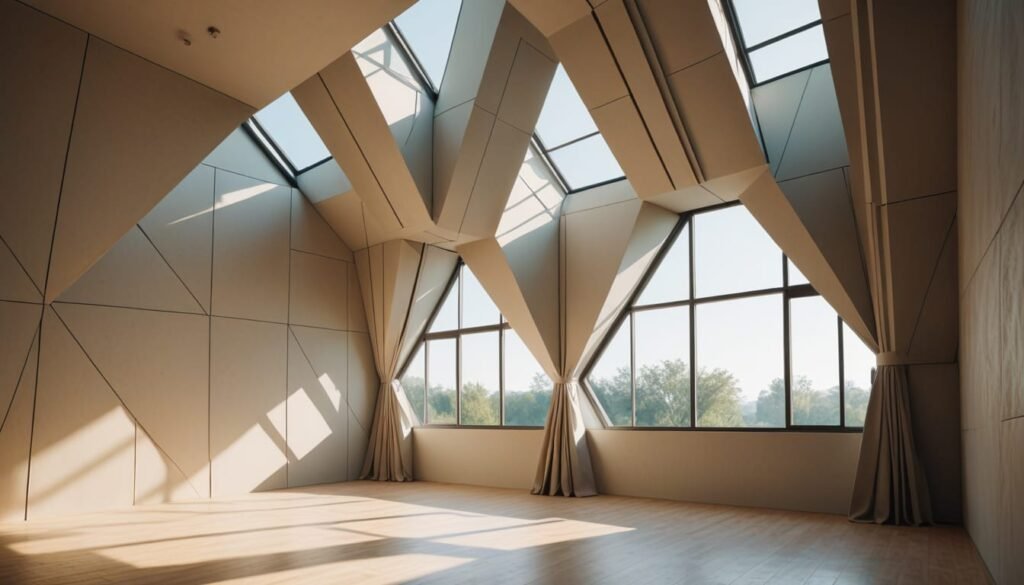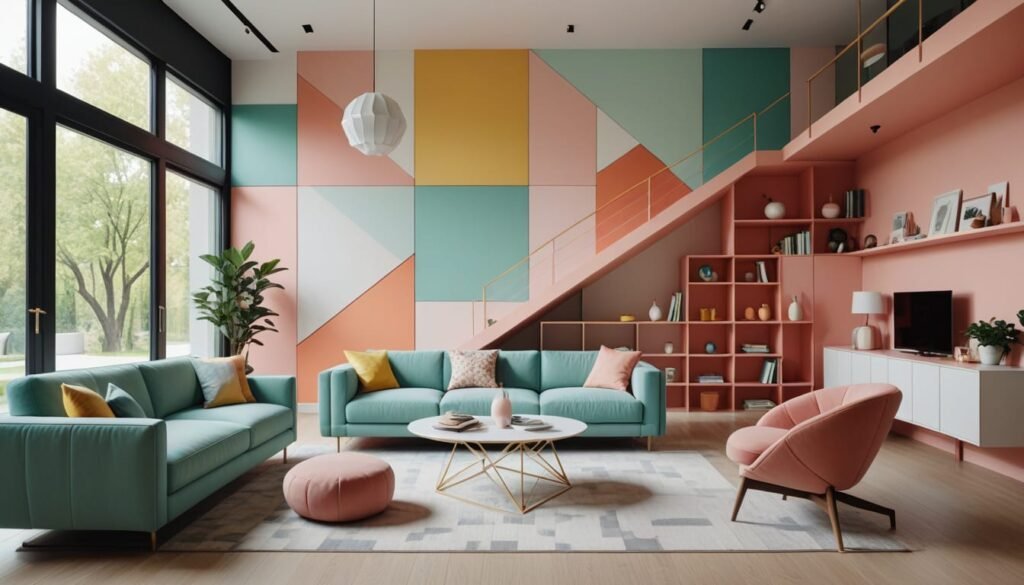Your cart is currently empty!
Stay in Touch!
Get updates about new artwork and upcoming events.
Get updates about new artwork and upcoming events.
—
by
In the realm of modern and contemporary interior design, geometry has transcended its mathematical roots to become an expressive, functional, and often poetic design element. Among the various geometric influences shaping today’s interiors, origami stands out for its elegance, precision, and adaptability. This ancient Japanese art of paper folding has found a sophisticated counterpart in architectural and structural design, giving rise to what we call “folded geometry.”
Folded geometry is more than just aesthetic; it is a tactile and spatial experience. It invites the eye to travel along pleats, creases, and angles, where light and shadow perform an ever-changing dance. In interior spaces, this approach to design creates environments that are at once serene and dynamic, structured and fluid. The result is a modern elegance that appeals to those who appreciate minimalist complexity and thoughtful artistry.
This blog explores how folded geometry, inspired by origami and informed by contemporary architectural trends, plays with light and shadow to transform interior spaces. We will discuss the origins of this design approach, its materiality, applications in various rooms, and the emotional and psychological impact it creates.

Origami, derived from the Japanese words “ori” (to fold) and “kami” (paper), is not merely an art form—it is a structural language. Architects and designers have long been inspired by the inherent strength and flexibility of folded forms. In architecture, folded plate structures are known for their ability to span large areas with minimal material. This structural efficiency aligns perfectly with the principles of sustainable and modern design.
Contemporary architects like Zaha Hadid, Daniel Libeskind, and Frank Gehry have explored complex geometric forms that echo the creased, pleated aesthetics of origami. Their work proves that folds can evoke emotion and create narrative, all while serving functional purposes like redirecting light, enhancing acoustics, or defining space without solid partitions.
In interiors, these architectural principles are scaled down to create intimate environments that mirror the grandeur of folded structures. Whether through wall panels, lighting, furniture, or ceiling treatments, the folded motif introduces a rhythm that reshapes the spatial experience.
Translating the ephemeral nature of paper folds into lasting materials requires ingenuity and craftsmanship. In interior design, this transformation often involves materials such as:
The choice of material plays a crucial role in how light and shadow are expressed. Glossy surfaces may reflect light in sharp, defined patches, while matte textures diffuse it more gently. The tension between these effects is what makes folded geometry so visually engaging.

Light is the ultimate collaborator in the folded geometry narrative. The angles, ridges, and valleys created by folds act like tiny stages for sunlight or artificial light to perform upon. As the light source moves—whether through the passing of the day or the flicker of a lamp—so too does the visual expression of the space.
In effect, folded geometry becomes a responsive, kinetic sculpture within the home.
Folded geometry can be applied across various parts of a home or commercial space to create cohesion and intrigue. Here’s how it transforms specific areas:
Each application invites a tactile and visual dialogue, making the space more than just functional—it becomes an immersive experience.

There is something inherently calming about folded geometry. Perhaps it is the orderly complexity, the predictability of symmetry paired with the surprise of asymmetry, or the way light reveals and conceals in equal measure.
Folded geometry evokes a sense of:
For those who live or work within such spaces, these psychological benefits are not just aesthetic—they are experiential.

Folded geometry is not just a passing trend; it is a philosophy of design that honors both form and function. As materials technology advances and lighting design becomes more responsive, we can expect even more nuanced and interactive interpretations of origami-inspired interiors.
Designers are already experimenting with kinetic walls that move in response to environmental changes, or with acoustic panels that serve both soundproofing and sculptural purposes. The integration of folded geometry with sustainable design principles—such as passive solar lighting, natural ventilation, and modular construction—further underscores its relevance.
In a world that is increasingly digital and fast-paced, folded geometry offers a quiet rebellion. It reminds us that design can be rooted in tradition, informed by nature, and executed with both discipline and creativity. Through the play of light and shadow, it offers moments of wonder in our everyday spaces.
Whether you are a minimalist enthusiast, a collector of modern design, or an architect at heart, folded geometry brings the timeless magic of origami into the architecture of life.